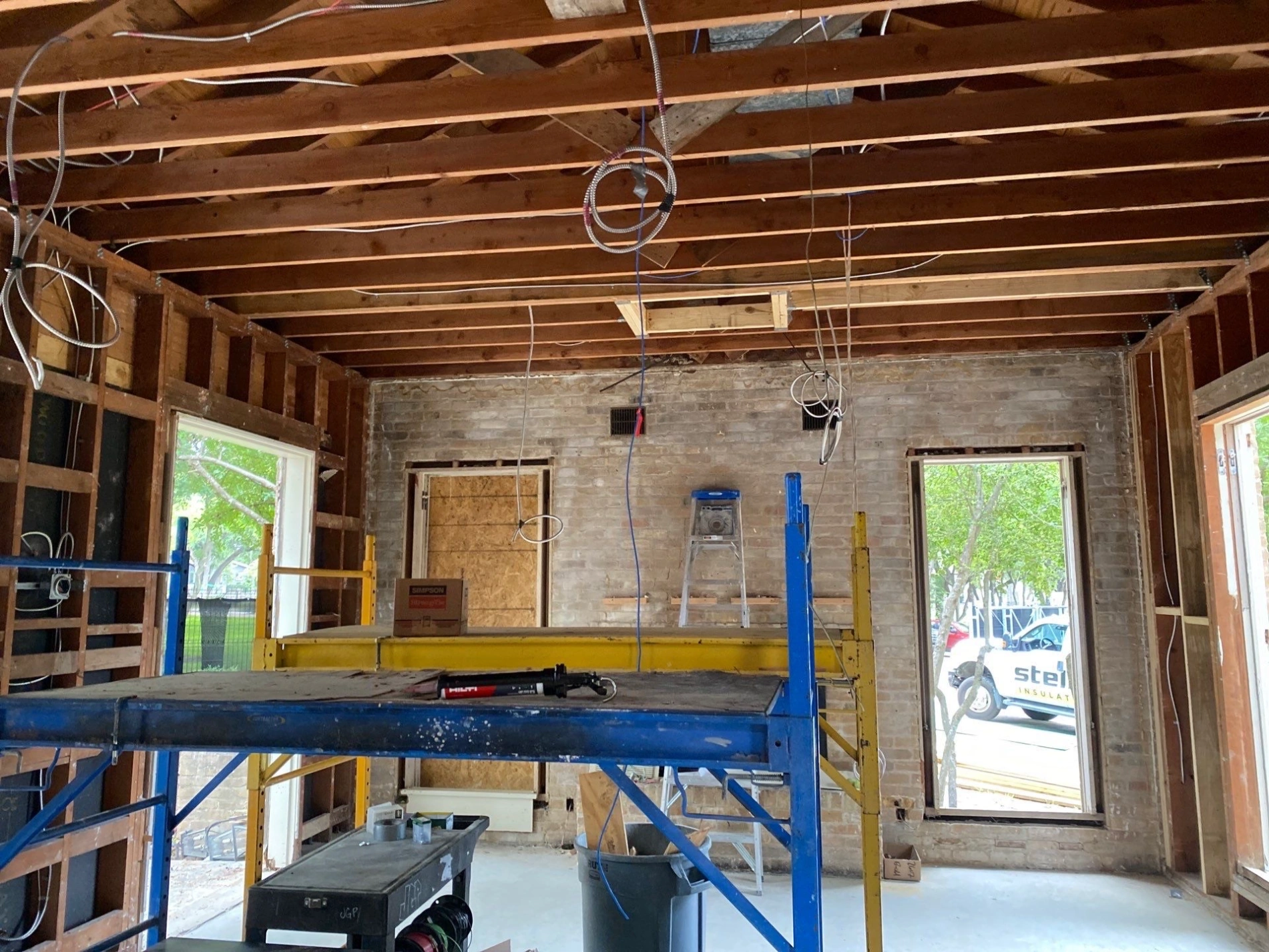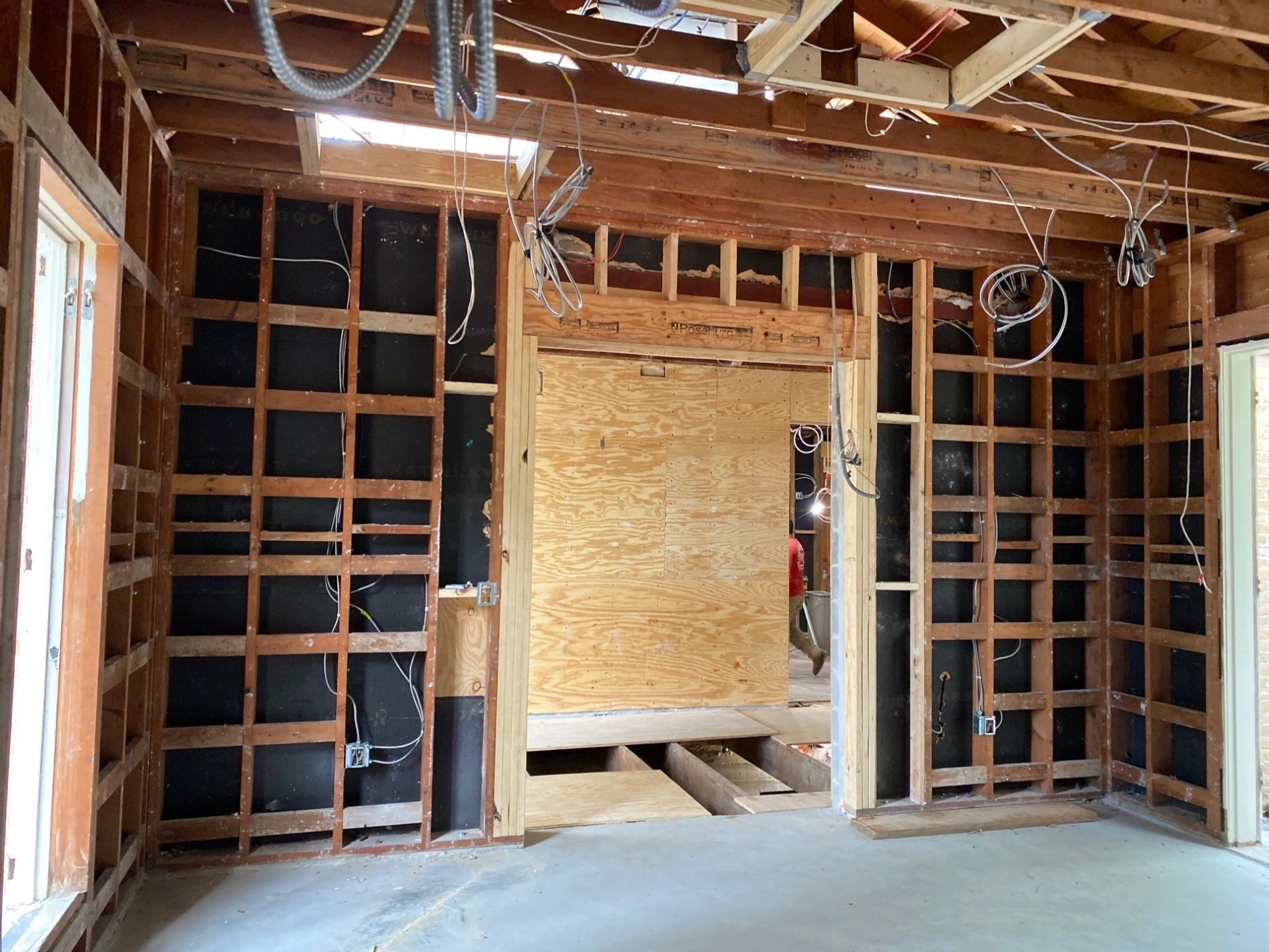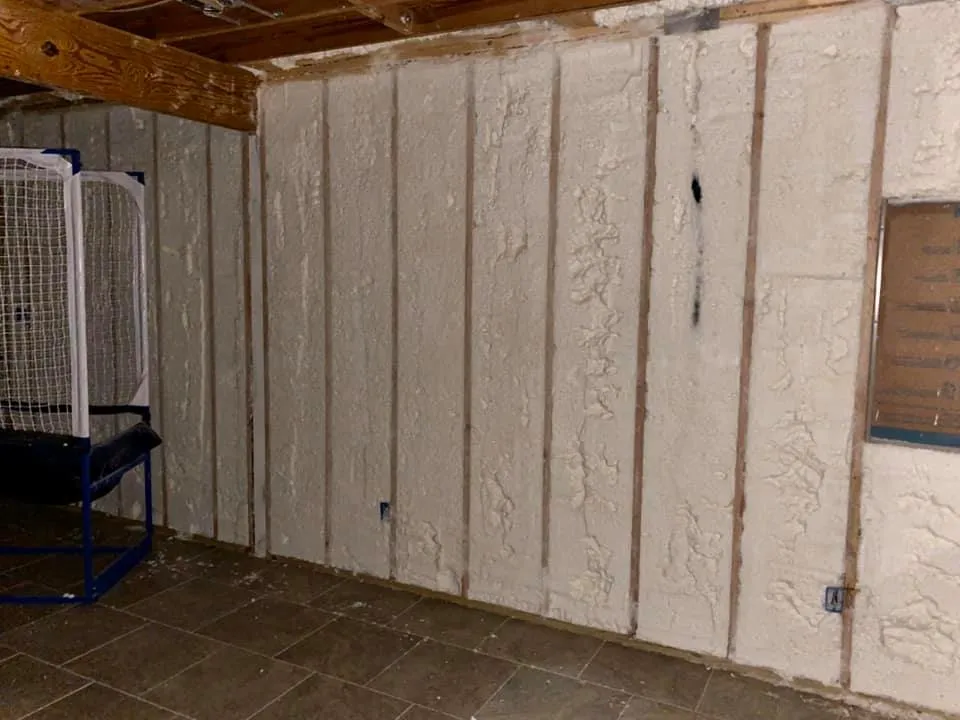Planning insulation during new commercial construction requires coordinating thermal performance requirements with structural design, mechanical systems, and building codes from the earliest design phases. The primary considerations include conducting comprehensive energy modeling, selecting appropriate insulation materials based on climate zone requirements, and integrating installation schedules with other construction trades to avoid conflicts and ensure continuous thermal barriers.
Successful commercial insulation planning involves establishing performance targets during schematic design, specifying materials that meet both thermal and fire safety requirements, and creating detailed installation sequences that align with the overall construction timeline. This systematic approach prevents costly retrofits and ensures optimal long-term building performance.
Drawing from extensive experience with commercial projects across various climate zones, this comprehensive analysis provides practical guidance for architects, contractors, and building owners navigating the complex decisions involved in commercial insulation planning. The strategies outlined here have been proven effective across diverse project types, from office buildings to industrial facilities.
Early Design Phase Considerations
The foundation of effective commercial insulation planning begins during the pre-design and schematic design phases. Energy code compliance analysis establishes minimum R-value requirements specific to the building’s climate zone and occupancy type. Building envelope consultants typically recommend conducting preliminary energy modeling at this stage to identify optimal insulation strategies before finalizing structural systems.
Climate-specific factors significantly influence material selection and installation methods. Buildings in hot, humid climates require vapor barrier placement on the exterior side of insulation to prevent moisture infiltration, while cold climates demand interior vapor barriers to control condensation. Mixed climates present the greatest complexity, often requiring specialized vapor-permeable barriers that adapt to seasonal conditions.
Coordination with mechanical, electrical, and plumbing (MEP) systems prevents thermal bridging and ensures proper integration. HVAC equipment placement, electrical conduit routing, and plumbing penetrations must be planned to minimize disruption to continuous insulation layers. This coordination reduces energy loss and prevents moisture intrusion points that commonly occur when trades work independently.
Insulation Material Selection for Commercial Applications
Commercial buildings require insulation materials that balance thermal performance, fire safety, moisture resistance, and long-term durability. The selection process involves analyzing building-specific requirements against material characteristics to optimize both initial costs and lifecycle performance.
| Material Type | R-Value per Inch | Fire Rating | Moisture Resistance | Best Applications |
|---|---|---|---|---|
| Closed Cell Spray Foam | 6.0-7.0 | Class 1 with coating | Excellent | Roofs, walls, below-grade |
| Open Cell Spray Foam | 3.5-4.0 | Class 1 with coating | Good | Interior walls, attics |
| Rigid Foam Boards | 4.0-8.0 | Varies by type | Good to Excellent | Continuous insulation |
| Mineral Wool | 3.0-4.2 | Non-combustible | Excellent | Fire-rated assemblies |
| Cellulose | 3.2-3.8 | Class 1 treated | Fair | Retrofit applications |
Bonus Tip: Specify continuous insulation whenever possible to eliminate thermal bridging through structural members. This approach can improve overall wall assembly performance by 15-25% compared to cavity-only insulation systems.
Market data from the Commercial Buildings Energy Consumption Survey indicates that buildings with properly planned insulation systems achieve 20-30% better energy performance compared to those where insulation decisions are made during construction phases (U.S. Energy Information Administration, 2023).
Code Compliance and Performance Standards
Commercial insulation planning must address multiple code requirements simultaneously, including energy codes, fire codes, and building codes. The International Energy Conservation Code (IECC) establishes minimum thermal resistance values, while local amendments may impose additional requirements for specific building types or environmental conditions.
Technical Specifications by Building Component
| Building Component | Climate Zone 3A R-Value | Climate Zone 4A R-Value | Climate Zone 5A R-Value | Installation Method |
|---|---|---|---|---|
| Roof Assembly | R-25 continuous | R-30 continuous | R-38 continuous | Above deck preferred |
| Above-Grade Walls | R-13+R-7.5 ci | R-13+R-7.5 ci | R-13+R-12.5 ci | Continuous exterior |
| Below-Grade Walls | R-7.5 continuous | R-10 continuous | R-15 continuous | Interior or exterior |
| Slab-on-Grade | R-10, 24″ depth | R-10, 24″ depth | R-15, 24″ depth | Vertical or horizontal |
Performance-based compliance alternatives allow design teams to demonstrate equivalent energy performance through whole-building energy modeling. This approach provides flexibility in material selection while ensuring overall building performance meets or exceeds code requirements.
Fire safety requirements vary significantly based on occupancy classification and building height. Assembly buildings, healthcare facilities, and high-rise structures often require non-combustible insulation materials or additional fire-resistant barriers over combustible insulation systems.
Installation Sequencing and Trade Coordination
Proper installation sequencing prevents common problems that compromise insulation performance. The general sequence involves completing structural work, installing continuous insulation layers, coordinating MEP rough-ins, and completing interior insulation before interior finishes.
Air barrier installation must occur in conjunction with insulation placement to achieve specified building envelope performance. The air barrier system requires careful detailing at penetrations, transitions, and structural connections to maintain continuity throughout the building envelope.
Bonus Tip: Schedule spray foam insulation installation during favorable weather conditions whenever possible. Temperature and humidity during installation significantly affect material performance, particularly for spray foam applications which require specific temperature ranges for proper curing.
Quality control measures include third-party inspections at critical stages, thermal imaging verification after installation, and blower door testing to verify air leakage performance. These verification steps identify problems early when corrections are less costly and disruptive.
Things to Consider Before Making a Decision
Before finalizing insulation specifications, evaluate the total cost of ownership including material costs, installation labor, energy performance over the building’s lifecycle, and maintenance requirements. Higher-performance materials often justify increased initial costs through energy savings and reduced mechanical system sizing.
Consider the building’s intended use and internal heat loads when selecting insulation strategies. High-occupancy buildings generate significant internal heat, potentially reducing heating loads but increasing cooling requirements. Manufacturing facilities with process heat loads require different approaches than office buildings with primarily lighting and equipment loads.
Regional climate patterns beyond simple climate zone classifications affect material selection. Coastal areas face salt spray concerns, while areas with extreme temperature swings require materials that accommodate significant thermal expansion and contraction.
Building orientation and envelope design influence insulation placement strategies. South-facing walls in cooling-dominated climates benefit from exterior continuous insulation, while north-facing walls may require different approaches based on winter heating loads.
Access for future maintenance and potential renovations should factor into material selection. Some insulation types allow easier modification for building system upgrades, while others require complete removal and replacement.

Stellrr Insulation & Spray Foam Services for Commercial Projects
Stellrr Insulation & Spray Foam delivers comprehensive insulation solutions specifically designed for commercial construction projects. The company’s expertise ensures proper integration with construction schedules and building performance requirements.
- Commercial Spray Foam Insulation: Provides superior air sealing and thermal performance with seamless application around complex geometries and penetrations, eliminating thermal bridging common in traditional insulation systems.
- Commercial Insulation: Comprehensive insulation services including material selection consultation, installation planning, and quality verification to meet project specifications and performance targets.
- Cellulose Insulation: Environmentally sustainable option offering excellent thermal performance and fire resistance for commercial applications requiring green building certifications.
- Insulation Removal: Professional removal services for renovation projects, ensuring safe handling of existing materials and proper preparation for new insulation installation.
According to the National Institute of Building Sciences, buildings with professionally planned and installed insulation systems demonstrate 25-35% better long-term energy performance compared to those with field-modified insulation approaches (NIBS Building Enclosure Technology and Environment Council, 2024).
Key Performance Metrics and Verification
Successful commercial insulation planning requires establishing measurable performance targets and verification methods. Thermal resistance testing, air leakage measurement, and infrared thermography provide quantitative assessment of installed system performance.
Building commissioning processes should include insulation system verification as part of envelope commissioning. This comprehensive approach ensures that designed performance translates to actual building operation and identifies any installation deficiencies before building occupancy.
Long-term performance monitoring through utility bill analysis and periodic thermal imaging assessments helps validate design assumptions and identify any degradation in system performance over time.
Bonus Tip: Establish performance guarantees with insulation contractor based on measurable criteria such as thermal resistance values and air leakage rates. This approach ensures accountability and provides recourse if system performance falls short of specifications.
Research from Lawrence Berkeley National Laboratory demonstrates that buildings with verified insulation performance achieve energy use intensity reductions of 30-45% compared to standard construction practices (LBNL Building Technology and Urban Systems Division, 2024).
Common Questions About Commercial Insulation Planning
When should insulation specifications be finalized during the design process?
Insulation specifications should be established during design development phase, after mechanical systems are sized but before construction documents are finalized. This timing allows coordination with structural and MEP systems while providing sufficient detail for accurate construction pricing.
How do you handle insulation at complex building envelope transitions?
Complex transitions require detailed drawings showing insulation continuity, air barrier connections, and vapor barrier placement. Common transition areas include roof-to-wall connections, window and door openings, and building expansion joints. Each transition must maintain thermal and moisture control performance.
What factors determine whether to use continuous exterior insulation versus cavity insulation?
The decision depends on climate zone requirements, structural system type, and condensation control needs. Continuous exterior insulation eliminates thermal bridging and provides better moisture control, while cavity insulation offers lower material costs but requires careful vapor barrier placement.
How do you coordinate insulation installation with other construction activities?
Coordination involves scheduling insulation after structural completion but before interior finishes, protecting installed materials from construction damage, and sequencing air barrier installation with insulation placement. Regular coordination meetings with all trades prevent conflicts and ensure quality installation.
Planning for Long-Term Success
Effective commercial insulation planning extends beyond initial installation to encompass long-term building performance and adaptability. Design decisions made during planning phases influence energy costs, occupant comfort, and maintenance requirements throughout the building’s operational life.
Regular performance evaluation through utility monitoring and periodic thermal assessments helps identify any degradation in system performance and guides proactive maintenance decisions. Buildings with well-planned insulation systems consistently demonstrate better energy performance and lower maintenance costs over their operational lifetime.
Consider future renovation and expansion possibilities when selecting insulation strategies. Systems that accommodate modifications without compromising overall performance provide greater long-term value and flexibility for changing building uses.
Get Expert Insulation Guidance
Planning insulation for commercial construction requires balancing complex technical requirements with practical construction constraints. Professional consultation ensures optimal material selection, proper installation sequencing, and long-term performance success.
Stellrr Insulation & Spray Foam provides comprehensive commercial insulation planning services, from initial design consultation through installation verification. The company’s experience with diverse commercial projects ensures solutions that meet performance requirements while maintaining construction efficiency.
Contact Stellrr Insulation & Spray Foam at (512) 710-2839 or info@stellrr.com for expert guidance on commercial insulation planning. Professional consultation during early design phases prevents costly corrections and ensures optimal building performance.
Frequently Asked Questions
What are the most critical mistakes to avoid during commercial insulation planning?
The most critical mistakes include failing to coordinate with structural systems early in design, inadequate attention to thermal bridging through structural members, and insufficient planning for air barrier continuity. These issues typically require expensive corrections during construction or result in permanent performance compromises.
How do building automation systems interact with insulation performance?
Building automation systems rely on consistent thermal performance to maintain comfort conditions efficiently. Poor insulation planning creates temperature variations that force mechanical systems to work harder, reducing equipment life and increasing energy costs. Proper insulation allows smaller, more efficient mechanical systems and more precise environmental control.
What role does building orientation play in commercial insulation planning?
Building orientation affects solar heat gain, wind exposure, and seasonal thermal loads. South-facing walls benefit from continuous exterior insulation to manage solar gains, while north-facing walls require careful vapor barrier placement to prevent condensation. East and west orientations experience different thermal stress patterns requiring specific detailing approaches.
How do sustainability goals influence insulation material selection?
Sustainability goals often prioritize materials with low embodied carbon, recycled content, and end-of-life recyclability. However, these factors must be balanced against thermal performance and durability to ensure long-term energy savings outweigh any environmental impacts from material production. Life cycle assessment tools help quantify these trade-offs.
What maintenance considerations should be planned during initial insulation design?
Maintenance considerations include access for periodic inspection, compatibility with building system upgrades, and replacement planning for materials with limited service lives. Design details should allow for future modifications without compromising the overall thermal envelope performance.





